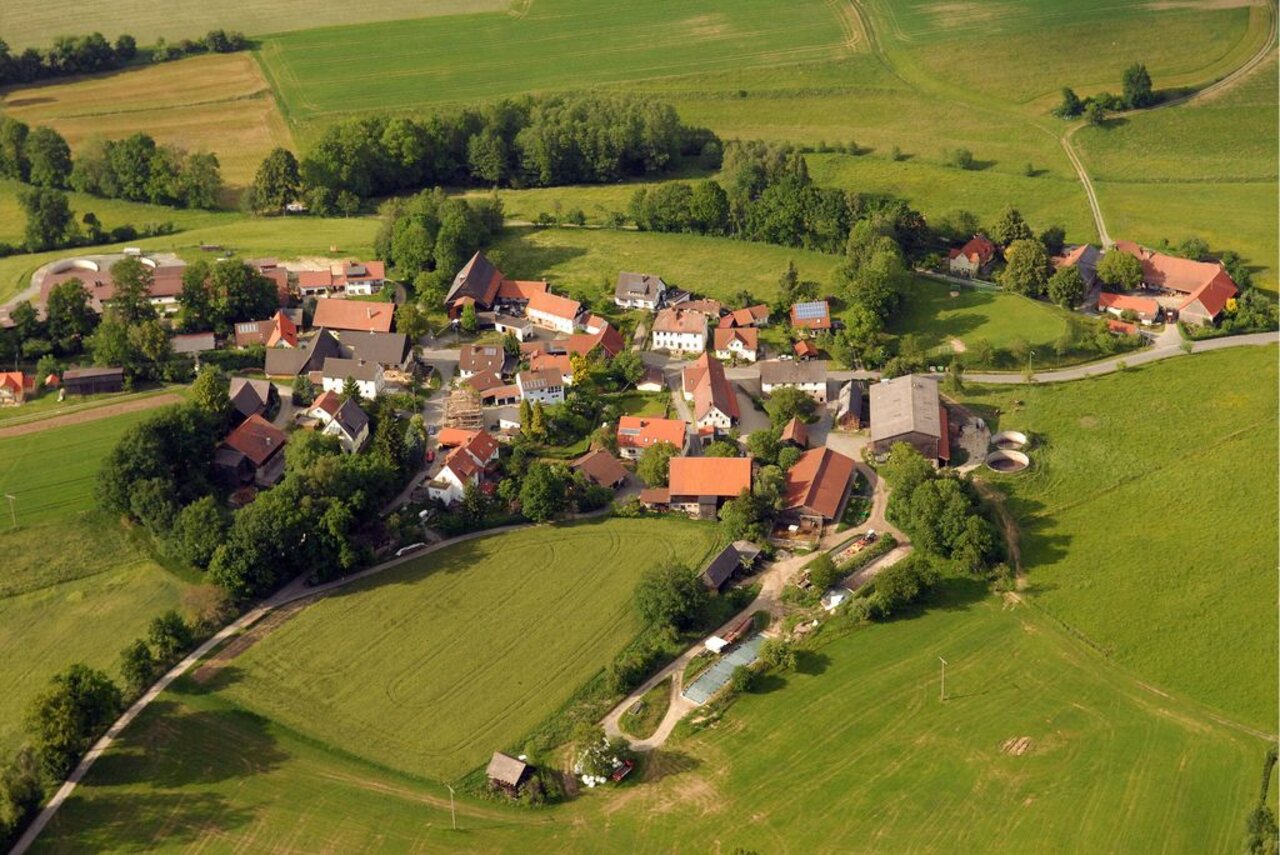Project
Civic engagement in rural areas

Civic engagement in rural areas
In rural areas, civic engagement is considered essential for individual social integration, social cohesion and a democratic political culture.However, there are hardly any empirically valid results on this; rather, neither the distribution and development of people's engagement in rural areas nor its actual significance for the (political) community have so far been adequately researched.The research project aims to analyze the extent and distribution of civic engagement in rural areas and to research its role for social cohesion and political culture.
Background and Objective
Rural areas often suffer from the dismantling of public services and the associated social consequences. In this situation, the self-organization of local citizens is politically associated with solutions to problems beyond state intervention. Particularly in structurally weak rural areas, where local associations and initiatives often compensate for bottlenecks in the public infrastructure (citizens' buses, village shops, non-police security, charitable services, hospice work) and are key providers of cultural and leisure activities, it is hoped that improvements will efforts to secure services of general interest, social cohesion and, last but not least, support for democracy, because associations also impart values, norms and skills to their members. Accordingly, expectations of cushioning the negative consequences of structural change processes, socio-spatial vitalization and promotion of social cohesion as well as sustainable stabilization of democracy are linked to civic engagement in rural areas.
Whether these expectations can be met is largely unclear in research.The empirical level of knowledge with regard to the distribution and development of civic engagement in rural areas and demographic differences in participation (e.g. gender, age, education and occupational groups) still shows considerable gaps.
Accordingly, the research project pursues the following goals:
- Descriptive analysis of the current situation and of change: To what extent and in what way are citizens and different social groups involved in rural areas? Can changes and shifts be identified here?
- Explanation of regional differences in civic engagement: How are these differences and possible processes of change related to other cultural, economic and structural factors?
- Analysis of the importance of civic engagement: What is the significance of classic and newer forms of civic engagement for the social and political community? Can civic engagement fulfill the hopes associated with it? Conversely, are potentials for social exclusion and polarization tendencies identifiable?
Approach
Quantitative analyzes based on survey data (socio-economic panel, volunteer survey, ALLBUS) on civic engagement in rural areas.
Links and Downloads
The research project is closely related to the project Young and Committed in Associations (JIVE).
Thünen-Contact

Duration
3.2021 - 12.2026
More Information
Project status:
ongoing
Publications to the project
- 0
Kleiner T-M (2025) On good deeds and the reproduction of social inequality : an empirical study on social class and volunteering in Germany. Sociol 59(5):943-961, DOI:10.1177/00380385251343282
- 1
Schubert P, Walter A, Kleiner T-M (2024) Engagement- und Zivilgesellschaftsforschung in Deutschland zukunftsfest aufstellen: Meilensteine, Defizite und Handlungsempfehlungen. Voluntaris 12(1):123-128, DOI:10.5771/2196-3886-2024-1-123
- 2
Kleiner T-M (2024) VIII.3 Quantitative Untersuchung von Ungleichheit: Engagement im Spiegel der Klassentheorie Pierre Bourdieus. In: Gille C, Walter A, Brombach H, Haas B, Vetter N (eds) Zivilgesellschaftliches Engagement und Freiwilligendienste: Handbuch für Wissenschaft und Praxis. 1. Auflage. Baden-Baden: Nomos
- 3
Kleiner T-M, Kühn M (2024) Volunteering in terms of spatial and social inequalities. Braunschweig: Thünen Institute of Rural Studies, 2 p, Project Brief Thünen Inst 2024/10a, DOI:10.3220/PB1712653357000
- 4
Kleiner T-M, Schubert P, Walter A (2023) BBE Policy-Paper zur Bundes-Engagementstrategie, Schwerpunkt : Zivilgesellschaftsforschung [online]. Berlin: BBE-Geschäftsstelle gemeinnützige GmbH, 7 p, zu finden in <https://www.b-b-e.de/fileadmin/Redaktion/03_Themenfelder/Policy_Paper/BBE-Policy-Paper_Zivilgesellschaftsforschung.pdf> [zitiert am 07.12.2023]
- 5
Kleiner T-M (2023) Der Sankt-Martin-Effekt : Engagement und soziale Ungleichheit. Forum sozial(4):46-49
- 6
Kleiner T-M (2023) Engagement als Distinktion: Wie soziale Ungleichheit im Ehrenamt Einzug hält. In: Deutsche Kinder- und Jugendstiftung GmbH (ed) mitmischen - Mädchen & junge Frauen mit freiwilligem Engagement stärken?. pp 32-35
- 7
Kleiner T-M (2023) Faktencheck : Bürgerschaftliches Engagement in ländlichen Räumen. BBE Newsl 24:1-6
- 8
Kleiner T-M (2022) Besser nicht zu genau hinsehen? Die blinden Flecken in der normativen Engagementforschung. Voluntaris 10(2):309-312, DOI:10.5771/2196-3886-2022-2-309
- 9
Kleiner T-M (2022) Freiwilliges Engagement in ländlichen Räumen - Konzept, Entwicklung, Themen. Ländl Raum (ASG) 73(3):29-32
- 10
Walter A, Kleiner T-M (2021) Bürgerschaftliches Engagement in ländlichen Räumen: Entwicklungen und Perspektiven [online]. BBE Newsl(21), zu finden in <https://www.b-b-e.de/bbe-newsletter/newsletter-nr-21-vom-21102021/walter/kleiner-engagement-in-laendlichen-raeumen/> [zitiert am 26.10.2021]
- 11
Kleiner T-M (2021) Civic participation and social embeddedness: differences between urban and rural communities. Int J Community Social Dev 3(1):45-67, DOI:10.1177/25166026211002048
- 12
Kleiner T-M (2021) Civic participation and social exclusion in rural and urban regions. Voluntaris 9(1):114-134, DOI:10.5771/2196-3886-2021-1-114
- 13
Kleiner T-M, Burkhardt L (2021) Ehrenamtliches Engagement: Soziale Gruppen insbesondere in sehr ländlichen Räumen unterschiedlich stark beteiligt. DIW-Wochenber 88(35):571-579, DOI:10.18723/diw_wb:2021-35-1
- 14
Kleiner T-M, Leseberg N (2021) Gemeinsam wirken in strukturschwachen und ländlichen Räumen [Interview]. Stiftung & Sponsoring(4):3-5
- 15
Kleiner T-M (2021) The isolating side effect of civic participation. J Sociol 57(4):877-897, DOI:10.1177/1440783320969906

![[Translate to English:] [Translate to English:]](/media/_processed_/2/0/csm_LV_Bei_Hornburg_Quelle_Johanna_Fick_neu_da89674833.jpg)
![[Translate to English:] [Translate to English:]](/media/_processed_/2/0/csm_LV_Bei_Hornburg_Quelle_Johanna_Fick_neu_3aae309567.jpg)





